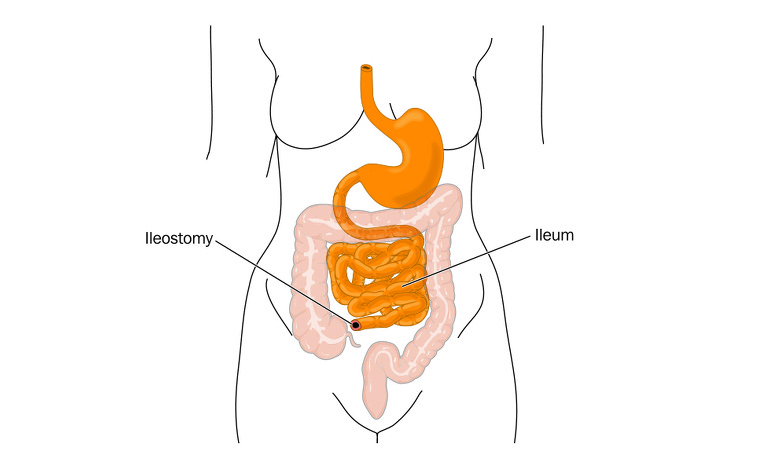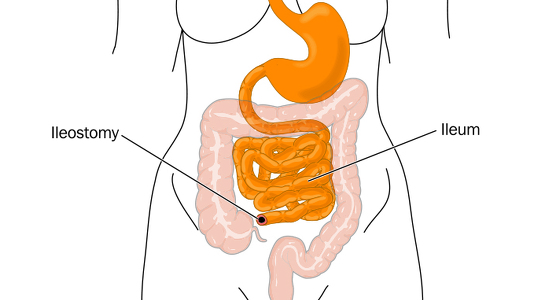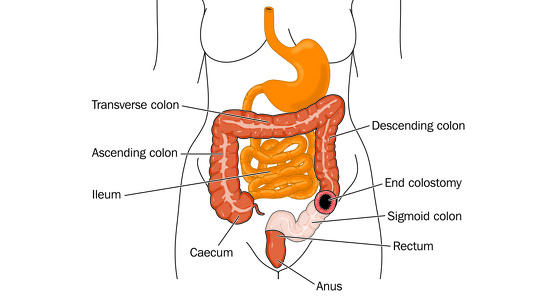
A stoma is an opening in your abdomen which is surgically created. It diverts faeces (or urine) into a bag attached to the opening.
There are different types of stomas which may be created in people with inflammatory bowel disease (IBD) depending on what part of your digestive tract is diverted to the surface of your body. These include:
Stomas can be temporary or permanent. If you are given a permanent stoma then it will not be possible to reconnect your gastrointestinal tract at a later date. A temporary stoma is given when it is likely that a reversal will take place at a later date. This is where the GI tract is reconnected so you can go to the toilet in the usual way.
Stomas can be created for all types of Crohn’s disease and ulcerative colitis.
A stoma is formed when it is not possible to reconnect your digestive system if you have had parts of it removed due to damage from your inflammatory bowel disease (IBD). The stoma allows waste to leave the body and be collected in a bag.
‘Feeding’ stomas are created when a person has severally damaged parts of their intestinal tract which prevents them from getting the food and drink they need.
How your stoma surgery is performed depends on what part of your gastrointestinal (GI) tract is being used to create it.
In general, though, once any diseased sections have been removed in surgery a healthy part of your GI tract is brought to the the surface of your body where an opening has been created. This is then stitched to the skin.
Before your surgery you will likely be introduced to a specialist stoma nurse who can explain about the stoma you will be getting, the equipment you will need to use afterwards and discuss with you the position of your stoma.
Having a stoma may seem very daunting and it will take you a bit of time to adjust to it. In the days after your surgery you will remain in hospital and specialist nurses will help to care for your stoma and teach you how to care for it yourself.
Your stoma will look moist, pinkish/red and seem quite large. This is perfectly normal following surgery and as it heals you will find that the size of your stoma reduces by around two thirds. This usually takes around 6-8 weeks. Everyone’s stoma is a different size.
It will take a few days for the stoma to start to work and at first the output may be quite watery with a strong smell. Again, as your body heals the consistency will become thicker and the odour will reduce.
You may also find that your stoma produces some noisy gas. This will settle.
While you are recovering you may be given a diet to follow to allow your body to heal and start to work again properly.
Once you are well enough, and you feel confident managing your stoma, you will be able to return home. This could be after 3-10 days.
Early complications
Later complications


